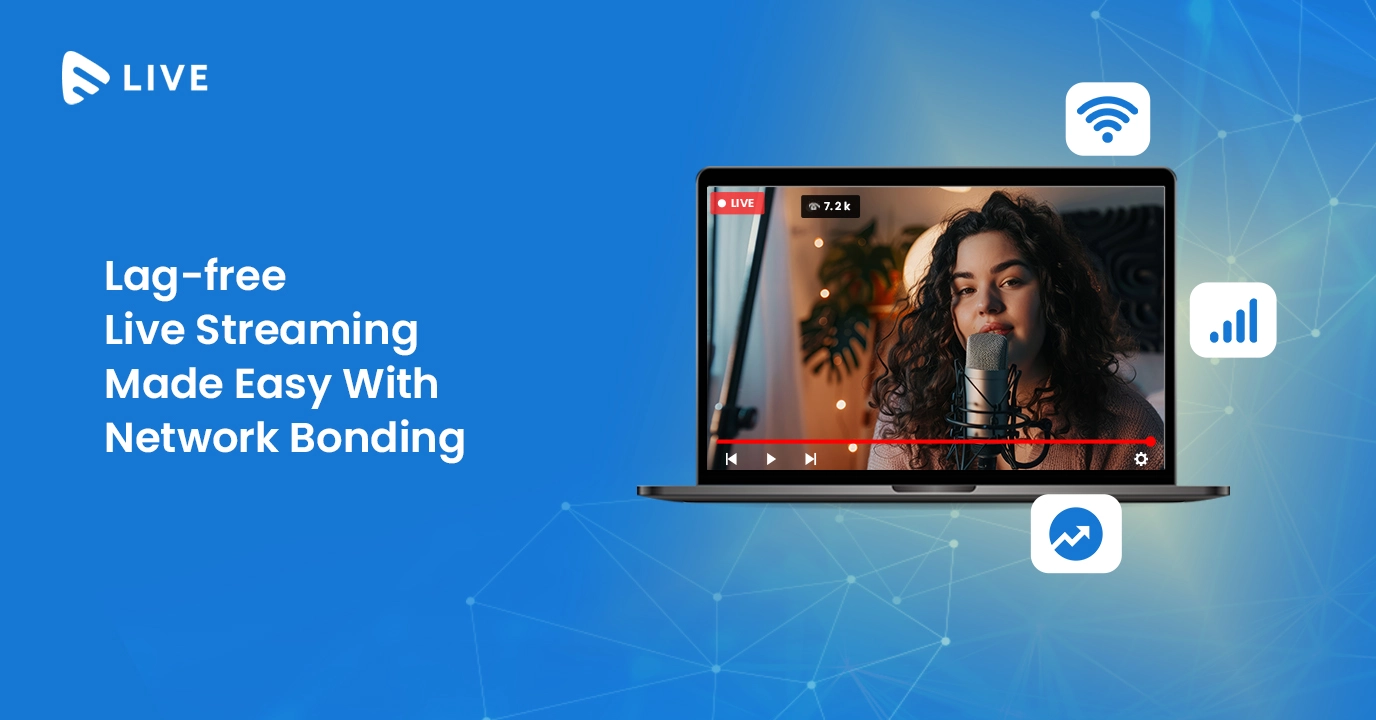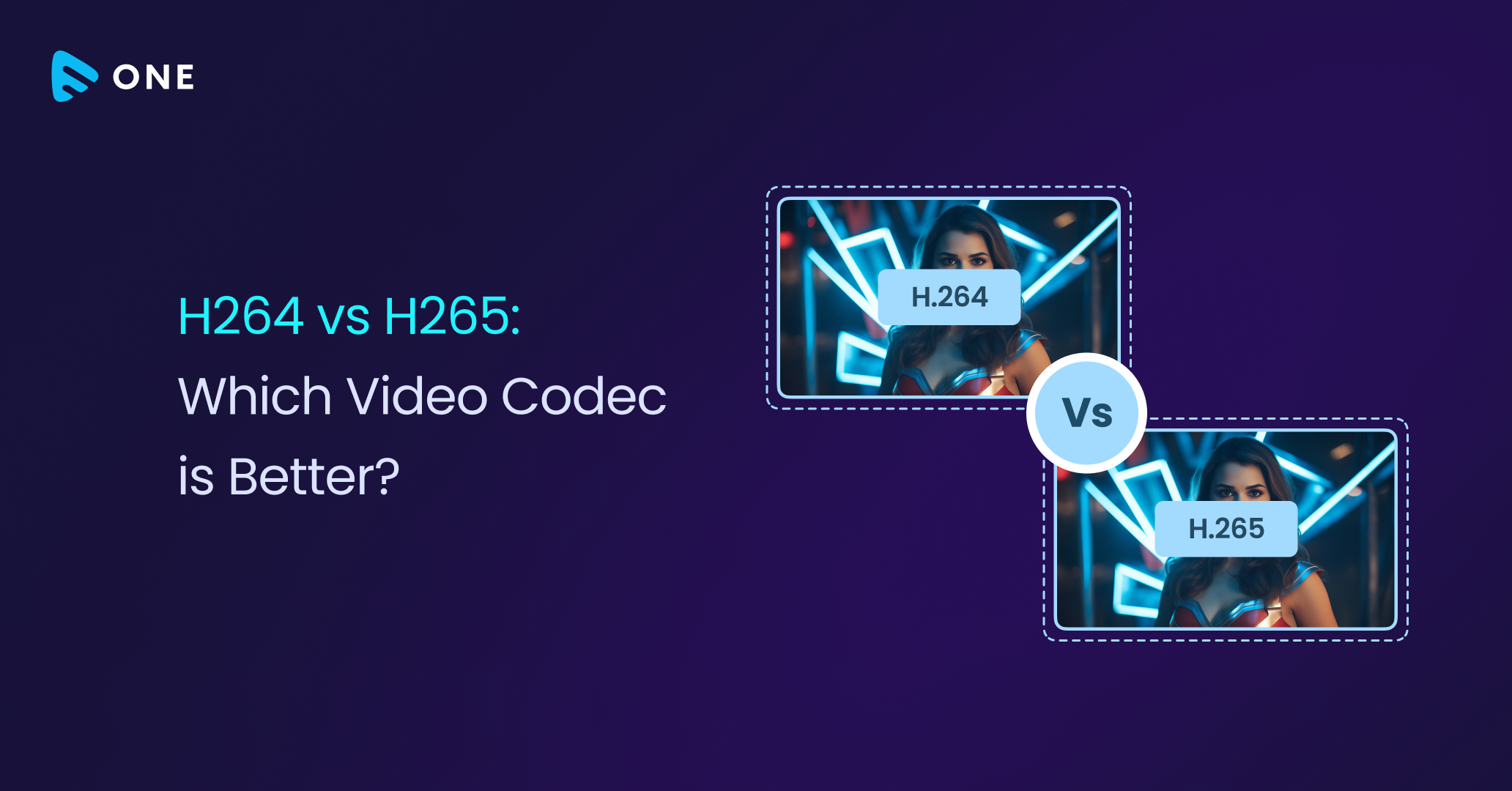Live streaming as we all know is one of the most sought-after tools to broadcast important information, conduct remote education, foster product advertising, provide entertainment, and much more. The use cases of live streaming are infinite and over the last few years, live streaming has established itself as the most powerful tool for internet-based information exchange.
What is the most important factor of any live stream?
Yes, you’ve guessed it right! Its internet. The internet connection can make or break any live stream. It’s a good internet connection that determines the profitability of your live streams as well as the end-user experience.
Network Troubles Of Live Streaming
A good steady internet connection delivers great quality footage and optimal experience whereas a somewhat shaky internet completely hampers the user experience. Live streaming is also a time-sensitive affair. Let’s say you are holding an important digital auction of real estate and your internet crashes. This will result in 2 things.
Firstly, the lag between the host and the receiver will result in a delay of crucial bid-related information that can result in financial losses both for the host as well as for the bidders of the auction. Secondly, bad internet also results in lower quality of streams which ultimately means the bidders might not be able to have a better look at what they are about to bid for resulting in chaos and eventually, bad business.
The story can be the same for a lot of time-sensitive live-streaming use cases. From news to live sports to betting to medical, where time plays a crucial part, providing lag-free live streaming becomes a necessity. However, the internet sometimes is not in your control.
Let’s say you are live streaming from a stadium using cellular data. With thousands of viewers, it also means thousands of viewers accessing the same bandwidth. This is bound to create saturation and the bandwidth will reduce. Often in such places, people observe poor internet quality despite having a full signal on their devices. Dedicated lan cables are one alternative to mobile live streaming apps.
In the media domain, news reporting happens in geographical areas with little to low internet bandwidth. Not all areas are 100% internet-enabled globally. Being dependent on wifi/cellular data is not exactly a wise choice while you are streaming remotely without a dedicated internet connection
So what do we do?
Live streaming cannot happen without the internet and therefore we must combine all the resources that we have to live stream content and this is where network bonding comes into play.

What Is Network Bonding?
Network bonding is one of the most reliable methods of internet transmission used in the live-streaming industry. Network bonding is nothing but using a separate piece of hardware to combine the bandwidth offered by multiple internet sources like a phone’s cellular network, wifi, ethernet, and more and use all of them to deliver a singular bandwidth channel.
Benefits of Network Bonding
Network bonding offers several benefits to live streamers and also to other requirements of internet users that require a high bandwidth network. Here are a few of them.
Reliable Connection: Since network bonding is an aggregation of multiple internet connections, even if one of the inputs fails, the others compensate and therefore produce a more stable connection crucial for live events.
Better Bandwidth: Bonding multiple bandwidths gives higher bandwidth which is a boon when we are streaming FHD and 4K content to the viewers as it requires significant data throughput. This ensures less degradation of the quality of the stream.
Location Flexibility: With network bonding, broadcasters can utilize multiple internet connections from different providers or geographical locations.
Cost Effective: Instead of investing in a single high-cost, high-bandwidth connection, network bonding allows broadcasters to combine multiple low-cost internet sources. This is more cost-effective and can get similar reliability.
Scalable Internet: The hardware devices used for network bonding offer enough ports and wireless connection feasibility to scale the Internet as and when needed. Network bonding therefore allows you to increase and decrease bandwidth at will and as per requirement.
Top 3 Network Bonding Devices
Here are a few network bonding devices that are available in the market that can be used to cater to live streaming needs.
Teradek Vidiu & Core
Teradek has been at the forefront of bonding technology for an extensive period. This spans across their range of VidiU products and their Wave monitor/encoder. These solutions heavily depend on Teradek’s Core service for tasks such as stream reception, de-bonding, transcoding, and multicast delivery. Core service is tailored for extensive usage scenarios, managing numerous encoders with multiple connections.
Kiloview 4G Bonding HDMI Video Encoder
The Kiloview P series encoders offer cutting-edge connectivity and streaming capabilities through its patented bonding algorithm with KiloLink technology. With support for up to 5 connections, including 2 internal 4G cellular, 2 USB 4G cellular (LAN), and Wi-Fi, along with a free configurable option for any desired network, it ensures robust and reliable streaming under varying conditions.
Dejero
Dejero provides mobile encoding packs that utilize various cellular modems to transmit live video over a bonded connection to the internet, which they refer to as Smart Blending. Additionally, Dejero offers rack mount encoders, receivers, and return servers, enabling dedicated point-to-point bonded connections.
How Does Network Bonding Work?
Bonding is a two-way affair. Commonly used for remote live streaming, network bonding follows the following steps to transmit files in an otherwise limited internet region.
- Firstly, the live streaming setup combines multiple cellular connections and other internet devices and is integrated using a software and hardware solution running on a computer.
- The specialized software or hardware integrates all connections into a singular virtual connection.
- The bonding system distributes data across available cellular connections based on bandwidth, latency, and signal strength for efficient traffic management.
- At the receiving end, these segments are reassembled into the original packets, ensuring data integrity and minimizing latency.
Then when the files are finally transferred, they can be seamlessly transmitted via live streaming software solutions available. Network bonding eases network transfer and delivers files much faster than a single connection.
Muvi Live: Seamless Live Streaming Software Solution
After you have received your live streams to the destination, the story does not end there. Delivering successful live streams requires powerful live streaming software solutions and Muvi Live is one such live streaming solution that can help you deliver your live streams all across the globe seamlessly and earn from it.
Features of Muvi Live
Start Instantly
Muvi Live is a DIY setup that lets you start multiple live streams without writing a single line of code. It delivers your live streams all over the world seamlessly thanks to its ultra-low latency live streaming and global content delivery network.
Live Chat
Audience interaction, an important aspect of livestream shopping, is effortlessly handled by Muvi Live using its live chat feature that lets the audience interact with the host in real-time solving all queries and doubts about the product.
Online Video Player
Gone are the days when YouTube branded your original content. With Muvi Live, you get a cross-platform, cross-browser, and cross-device compatible HTML5-based player with your own branding.
Muvi Live SDKs
Integrate live broadcasting capability or build a mobile live streaming app from the ground up using a suite of SDKs and APIs for any platform thus giving customization to your live stream platform like no other platform ever.
Muvi Meetings
Connect with your selected audience instantly using the Muvi Meetings plugin of Muvi Live which lets you host meetings instantly on any browser or platform. This enhances communication and can be used to communicate in-house or with your bigger clients.
Pay As You Go
Using Muvi Live does not come with hefty monthly subscription charges. Instead, the platform is completely based on a pay-as-you-go approach where users get billed on the streaming minutes and the bandwidth that they consumed thus making Muvi Live a much more economical choice for live streamers.
Social Media Integration
Muvi Live enables you to live stream on multiple social media platforms concurrently. With social media integration, you can reach out to millions of viewers without spending much effort and resources. This enables you to directly interact with your audience, engage them with your content, and grow your audience base.
Final Thoughts,
Network or cellular bonding can be a boon for live streaming in areas where good internet connection is unavailable. However, the devices are costly and require more technical expertise and therefore it is recommended for live streamers with high budgets such as news broadcasters and live sports streamers.
Muvi Live can directly capture your live streams from network-bonded devices and stream it globally at a very competitive price.
















Add your comment